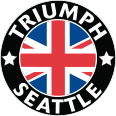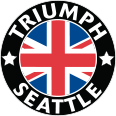With a Little Help from My Friends
Words: Zack Cyphers
Photos: Zack Cyphers & Friends

I’ve learned a few things in my three decades on this planet. I’ve learned to shim valves and to speak a few foreign languages. I can drive stick shift and play guitar. I know that here in Seattle, it’s just called “I-5”. I know the proper way to order a Philly cheesesteak. I like to consider myself a fully-formed adult human, but I still struggle with some things – one of them is asking for and accepting help from others. That is my Achilles’ heel.
I don’t know where or when I got it in my head that I’ve got to be this rugged individualist, able to take on any challenge and come through with flying colors. Whether it’s at work learning new software or out in the garage spooning new knobbies onto my adventure bike, I get frustrated with myself when I’m not good at something the first time. But this expectation I’ve put upon myself is completely unreasonable. No one would expect me to be a concert pianist the first time I sat down at a piano.
The price of not accepting help is high. I warped my brake rotors trying to set the bead on those new tires – a $450 mistake. When I attempted the same procedure with a friend’s help it took fifteen minutes, and no rotors were harmed in the process. I once got stuck in the mud fifty miles from home and struggled for hours before I cracked and called a tow. The tow truck driver dragged my stubborn butt out of the muck in mere minutes.
Do you remember those cheesy grade school posters, the ones reminding you that failure is the best teacher? They’re dead on. You don’t learn by doing something right the first time. You learn by breaking stuff, by failing and by falling down hard. I should know; when it comes to riding and wrenching, I learn a lot of things the hard way. The Backcountry Discovery Route (BDR) kicked my butt and taught me a lesson – sometimes you have to accept help or you won’t make it home.

The Triumph Scrambler 1200 XE, a true adventure motorcycle.
 At the gas station in Stevenson, a man with a pickup truck hollered, “Where’re you guys headed?”, his mouth obscured by a red bandana. It was the peak of the COVID crisis, and we were getting out of town for some moto social distancing. We must have been quite a sight – six riders in assorted adventure gear, bikes loaded down with camping supplies. The sky was clear and the temperature had risen to the 80s by midday. It was bearable while moving, but we stopped and threw off our jackets and helmets as we descended on a taco truck. Within sight of the mighty Columbia River, we fueled up bikes and riders and began our adventure.
At the gas station in Stevenson, a man with a pickup truck hollered, “Where’re you guys headed?”, his mouth obscured by a red bandana. It was the peak of the COVID crisis, and we were getting out of town for some moto social distancing. We must have been quite a sight – six riders in assorted adventure gear, bikes loaded down with camping supplies. The sky was clear and the temperature had risen to the 80s by midday. It was bearable while moving, but we stopped and threw off our jackets and helmets as we descended on a taco truck. Within sight of the mighty Columbia River, we fueled up bikes and riders and began our adventure.
Our plan was fairly straightforward: ride the Washington Backcountry Discovery Route (WABDR) from Oregon to Canada. We’d scheduled four days, an ambitious plan that was quickly put out of reach by some misadventurous mishaps.
At this point let me say that my experience as a motorcycle rider is fairly new. I have no racing pedigree; I didn’t grow up riding dirt bikes. I’m just a latchkey 80s kid from a midwestern suburban family who used to think vehicle maintenance was best left to professionals. We all paid for oil changes until my mechanic stepdad joined the fold about ten years ago. I only became interested in riding two years ago when he and my mom got dirt bikes.
The WABDR is a backwoods route composed of winding switchbacks through the spine of the Cascades. The roads are rough, consisting of dirt, gravel, loose rock, and in parts, mud, clay and sand. It can be tackled in a four wheel drive vehicle or on a dual sport motorcycle. Bypasses exist for riders who wish to skip some of the more challenging sections. We followed GPS tracks downloaded from the WABDR website, and we had paper maps stashed in our tank bags as backup.


Our first setback came on day one. A rider in our group forgot to check his tire pressures before he set off, and a pinch flat sent him off the road into the ditch. I didn’t see it happen; I was riding back with the sweep. By the time I rounded the bend, my friend was sitting in the grass next to his overturned F800 GS, helmet off, sipping water. He had ridden with his jacket off to beat the heat, and ended up with bloody elbows and chest abrasions. We all pulled together and heaved the bike back up onto the road. Then we unpacked our tools and First Aid kits and got to work. We propped the bike up on one of the side cases, and got the wheel off. The tire was changed in minutes.
I was amazed at how quickly we rallied to help him get back in the saddle. But I was also struck by how easy it was for my friend to accept help. He’d never changed a tire before, but his pride didn’t stop him from watching us take care of the task for him. He didn’t have anything to prove, and he didn’t seem to feel any need to wave off the rescue crew and suffer through it alone. Without a ton of fuss, we quickly got underway again.

We wound our way up and down through forest roads and mountain passes. We rode in sand, mud, gravel and even snow. We descended into dense tunnels of tree branches that opened up to reward us with breathtaking mountain views. The mountains were out – St. Helens, Adams and Rainier. We took in their glory while trying not to take our eyes off the trail. We rode in the attack position, up out of the saddle, knees bent, bracing for wheel-eating obstacles. I tried my best to pick a line clear of the debris that would throw me, but couldn’t resist taking a risk or two when I saw a chance to splash down into a mud hole. The dirty boots and bikes would be the glorious evidence of our travails.

We covered mountain miles without any major mishaps. Two of our riders lost some of their cargo, but this was more comical than frustrating. I was riding near the back, following their trail of breadcrumbs, pausing occasionally to retrieve a flip flop or a water bottle that had shaken loose. At camp that night I joked about opening a roadside stand where I could sell lost gear.
 The next day we lost a man and lost our way. In an effort to avoid some of the more challenging terrain, we looked for bypasses. The GPS units weren’t functioning correctly and the map didn’t offer enough detail. Each time the trail presented a “Y” we had to make a choice, and we exponentially increased our chances of getting lost. After several dead ends and wrong turns, we gave up, headed back down the mountain to tarmac and regrouped at a gas station. One member of the group noticed his top yoke coming loose and decided he couldn’t go on riding with it in that condition. We were now reduced to five.
The next day we lost a man and lost our way. In an effort to avoid some of the more challenging terrain, we looked for bypasses. The GPS units weren’t functioning correctly and the map didn’t offer enough detail. Each time the trail presented a “Y” we had to make a choice, and we exponentially increased our chances of getting lost. After several dead ends and wrong turns, we gave up, headed back down the mountain to tarmac and regrouped at a gas station. One member of the group noticed his top yoke coming loose and decided he couldn’t go on riding with it in that condition. We were now reduced to five.
That’s when my bike overheated. My friend was riding sweep and hung back to see why I’d stopped. The temperature warning lit up on my dash. I stopped the bike to cool it down, and when I got off, I noticed fluid leaking from some unidentifiable place underneath. I was horrified. I checked the reserve coolant reservoir, and couldn’t see anything. My drinking water supply was low, but I had a canteen that had fallen off the bike in front of me, so I got down in the dirt and desperately splashed water into the reservoir. I crossed my fingers and turned the bike on. No warning light. Success for now.
 We pressed on, riding hard to catch up with the others. I learned that careful clutch control and delicate braking would keep me from skidding out on rocky downhill sections. At a brief photo stop I noticed more fluid leaking out of the bike. I was sweaty and tired and confounded by this problem. I unpacked my tool kit, which I’d foolishly placed deep in my duffle, and laid down on my jacket. When I inspected the bike, I realized I’d boiled off all the coolant. In my haste to remove the skid plate, I stripped a bolt and had to splash water into the cooling system through a narrow gap between the plate and the frame.
We pressed on, riding hard to catch up with the others. I learned that careful clutch control and delicate braking would keep me from skidding out on rocky downhill sections. At a brief photo stop I noticed more fluid leaking out of the bike. I was sweaty and tired and confounded by this problem. I unpacked my tool kit, which I’d foolishly placed deep in my duffle, and laid down on my jacket. When I inspected the bike, I realized I’d boiled off all the coolant. In my haste to remove the skid plate, I stripped a bolt and had to splash water into the cooling system through a narrow gap between the plate and the frame.
This is where my help aversion got the best of me. A friend came over to take a look and realized that my radiator was so clotted with mud, that it wasn’t cooling the engine anymore. He squeezed a jet of water from his water bladder and simply cleared away the dirt. I whipped my hands away as the hot, muddy water ran down the front of the bike. We refilled the coolant reservoir with water, turned on the bike and, lo, no more temperature light. Had I asked for help in the first place, we would have been underway in minutes, without any stripped bolts or scalded hands. We were once again out of harm’s way.
My next move, however, was the one that ended the trip for me. Only two of us had GPS units, so we decided to switch places. As one of the weaker riders, I prefer to ride at the back, but I took my turn up front and attempted to navigate the labyrinth of mountain trails to the one that would finally get us past this section. I chose wrong and I fell hard.
 Babyhead rocks lay ahead, as far as we could see. The red dirt trail led to an open rusty metal gate and more punishing rocks. I began a long, rocky descent. I tried to brake, but I couldn’t find traction. Every move seemed to produce a skid. Inevitably, the bike toppled over and I came down with it. I dashed my helmeted head on a rock. When I came to rest in the dirt I looked over to see my friends gathered around. I hopped up to help pick up the bike, but they shooed me away.
Babyhead rocks lay ahead, as far as we could see. The red dirt trail led to an open rusty metal gate and more punishing rocks. I began a long, rocky descent. I tried to brake, but I couldn’t find traction. Every move seemed to produce a skid. Inevitably, the bike toppled over and I came down with it. I dashed my helmeted head on a rock. When I came to rest in the dirt I looked over to see my friends gathered around. I hopped up to help pick up the bike, but they shooed me away.
As several guys heaved the bike up, the extent of the damage became clear. A sharp rock had punctured the right side engine case, and murky oil was spreading into a large stain on the ground. There was no way of knowing how much oil I’d lost; it had seeped into the earth fast. I sat back and rested in the shade, pondering how on earth I’d get out of this one. I’d have to ask for help, of course.
But I didn’t have to. Before I knew it, the rescue was underway. Two members of our squad had tool kits out and were working on a solution. One friend cleaned and sanded the dime-sized hole in the case, while another began mixing epoxy. I watched in awe, sipped water, and made mental notes to add some items to my kit if we ever made it out of this. The epoxy patch looked promising, but just in case, we covered it with a layer of duct tape. To a guy without a deep riding history, it was the best field repair I’d ever seen. Would it hold up?


Trying not to burn myself, I unscrewed the inconveniently placed oil filler cap with a gloved hand. I tore off a piece of my BDR map (a remote part of the state I was sure I wouldn’t be visiting anytime soon) and curled it into a funnel. Luckily, one man had actually brought several small bottles of oil with him (I noted another item to add to my future kit). He’d assured me that it was in fact motorcycle oil, though he’d reused chainsaw oil bottles because of their convenient size. We got the bike level and added oil until we could just barely see evidence in the sight glass. We poured and prayed.
There was no real level ground to work with, but I put the bike in neutral and wrestled it off the rocks into the trailside dirt. I donned my gear and prepared for a fresh start. All watched as I got ready for the moment of truth. I flipped the switches and the dash lit up. I kicked up the kickstand and braced myself with a foot on the rear brake. I fired up the engine. Success! The engine purred – not a struggling cantankerous sound, but a real steady rhythm. I sat for a few minutes waiting for warning lights to light up, but they never did – no temperature light, no oil pressure indicator, nothing; just my trusty Triumph roaring like nothing had happened. I was phased, the bike was not.
We made it off the mountain, and the Fellowship decided to split up near Ellensburg, though three stayed on to tackle more off-road riding. I cruised the freeway back home to King County, obsessively checking the dash for warning signals. The bike made it home, and probably could have kept going if I’d asked it to, but I’d had enough adventure for this trip.

My first BDR experience was a trying one, but in hindsight I can’t complain much. The weather was perfect the whole time, I was riding with a great group of guys, and the mountain views were distracting in the best way. Any great travel experience, two-wheeled or otherwise, has the power to change your perspective. I came home with a new resolution, one born of necessity: from now on, instead of struggling through alone, I’d learn to accept a helping hand.

_________________________________
To see more of Zack’s adventures, click here to find him on Instagram!



